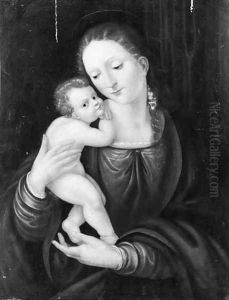Peter (Peter Candid) Witter Paintings
Peter Witter, better known as Peter Candid, was a Flemish-born painter, engraver, and tapestry designer who lived and worked during the late Renaissance period. Born as Pieter de Witte in Bruges in 1548, he was also known by his Italian name Pietro Candido, reflecting his time spent in Italy and the influence of Italian art on his work.
Candid began his artistic training in his hometown of Bruges, which was known for its vibrant arts scene. However, his talent and ambition led him to travel to Italy, where he further developed his skills. He spent time in Florence, where he worked at the court of the Grand Duke of Tuscany, Cosimo I de' Medici. During this period, he assimilated the Mannerist style, which is characterized by elongated figures and often complex composition. It was also in Italy that he adopted the name Peter Candid.
In 1586, Candid moved to Munich, where he became a court painter to William V, Duke of Bavaria. His work in Munich included a variety of projects, from painting large-scale frescoes and altarpieces to designing tapestries and stained glass windows. Candid was instrumental in the decoration of the Munich Residenz, the palace where the dukes of Bavaria lived. His style evolved during his time in Munich, as he incorporated elements of the Northern Renaissance into his work, blending Italian Mannerism with the more detailed and realistic approach that was typical of Flemish art.
One of his most notable works is the 'Assumption of the Virgin' at the St. Michael's Church in Munich. His work was characterized by harmonious color, clarity, and balanced composition. As a court painter, Candid also produced numerous portraits, although not all have survived to the present day.
Candid's contributions to art were not limited to painting; he also played a significant role in the development of tapestry design in Bavaria. His designs were woven into tapestries that decorated the interiors of palaces and were considered prestigious artworks.
Peter Candid died in Munich in 1628. His work had a significant impact on the development of art in Southern Germany and his legacy continued through his pupils who carried on his artistic style. Candid's paintings can still be seen in various churches and museums, testifying to his skill and the high regard in which he was held during his lifetime.
